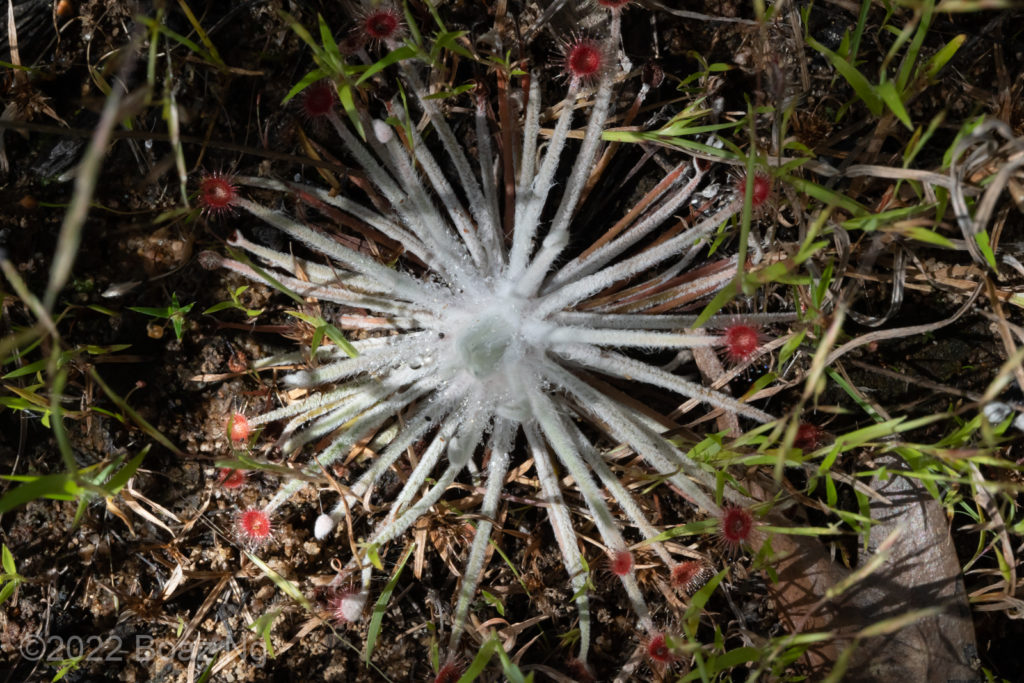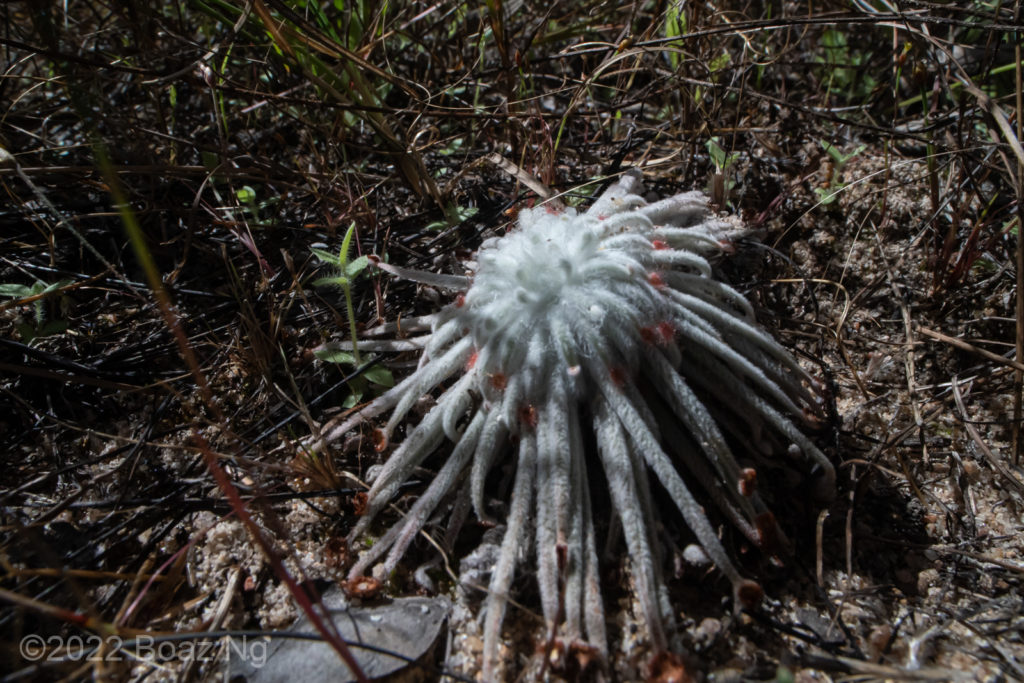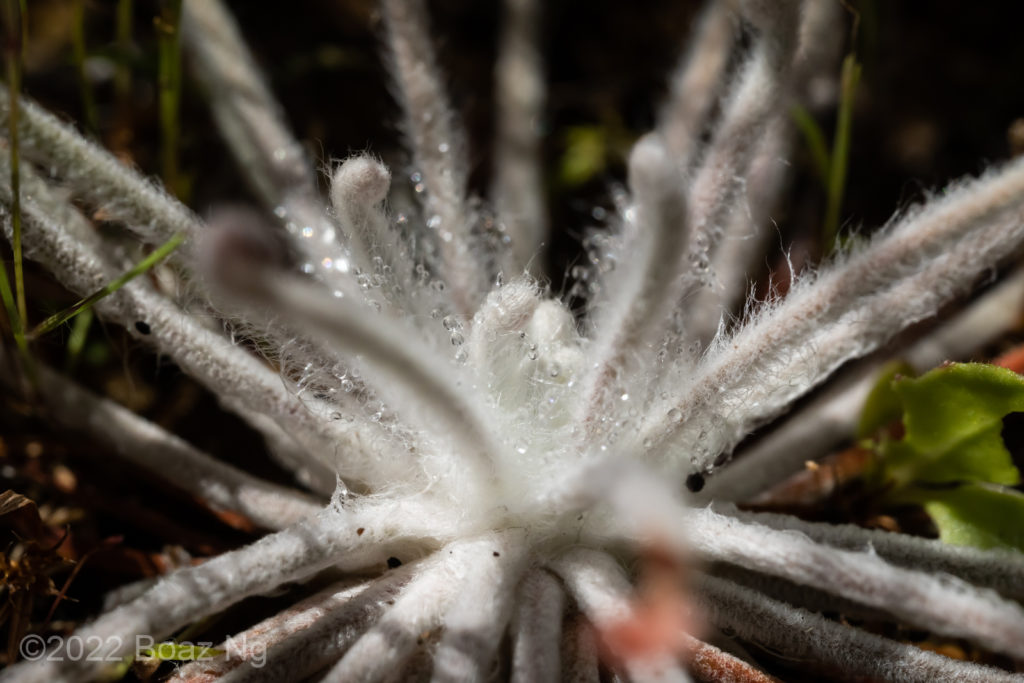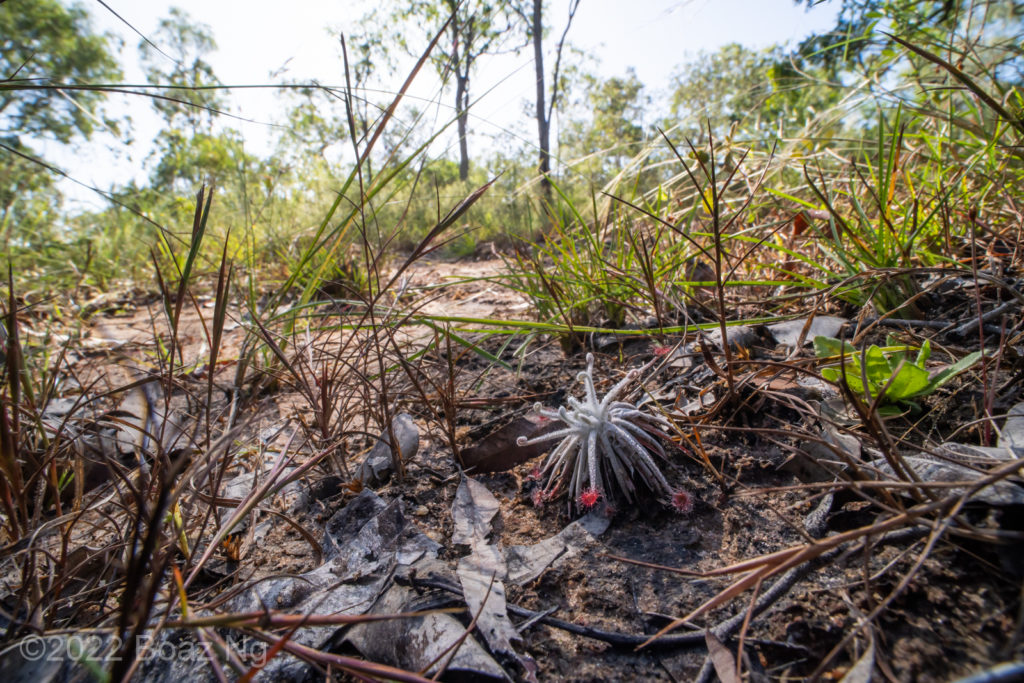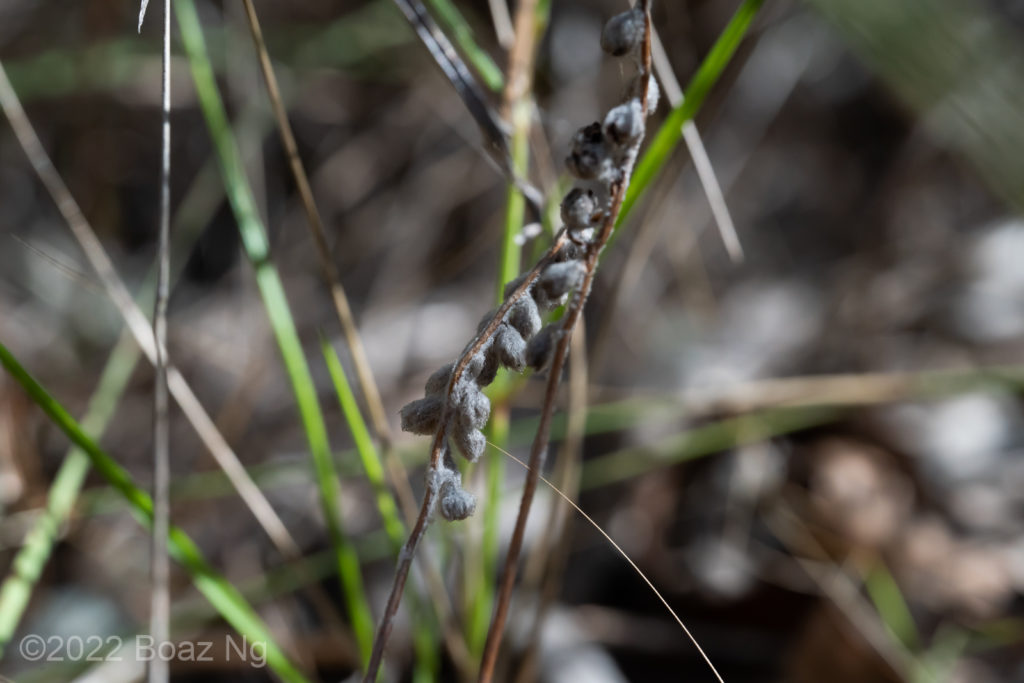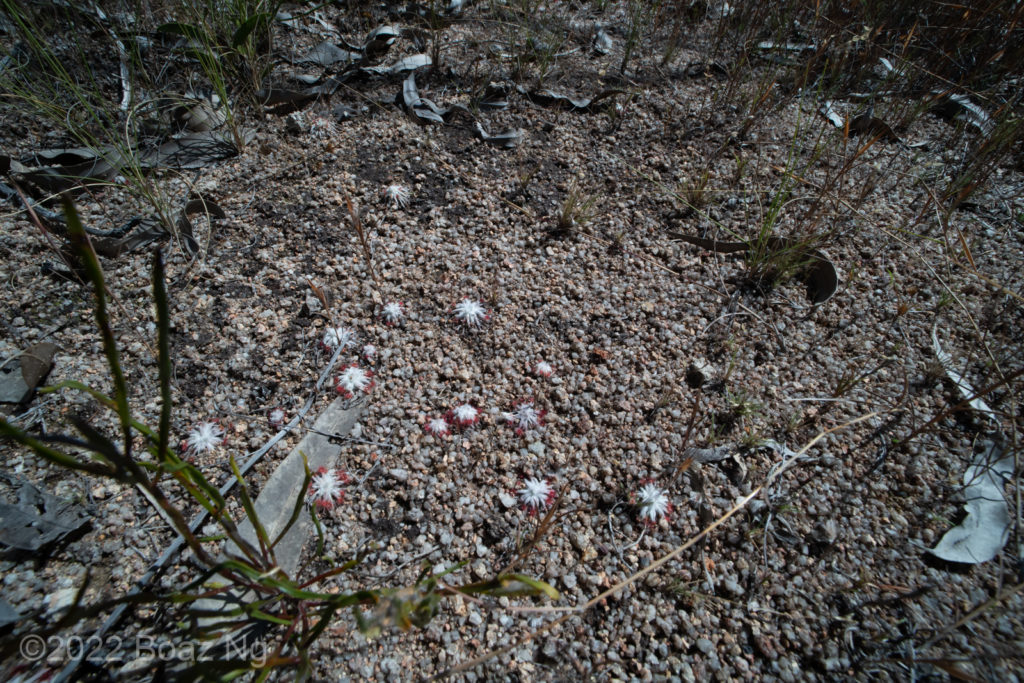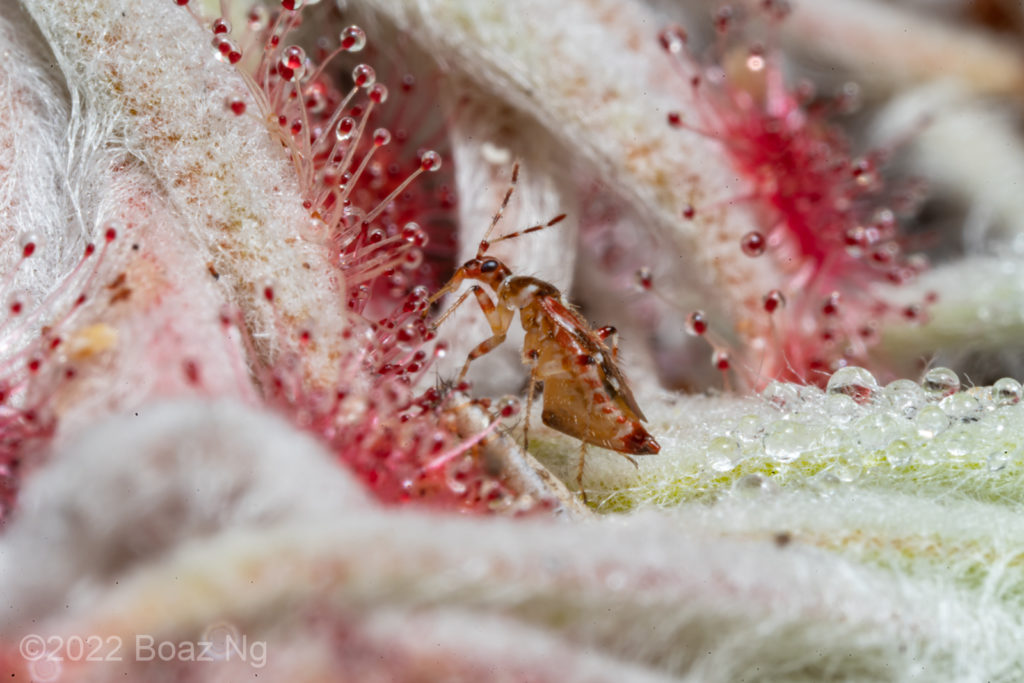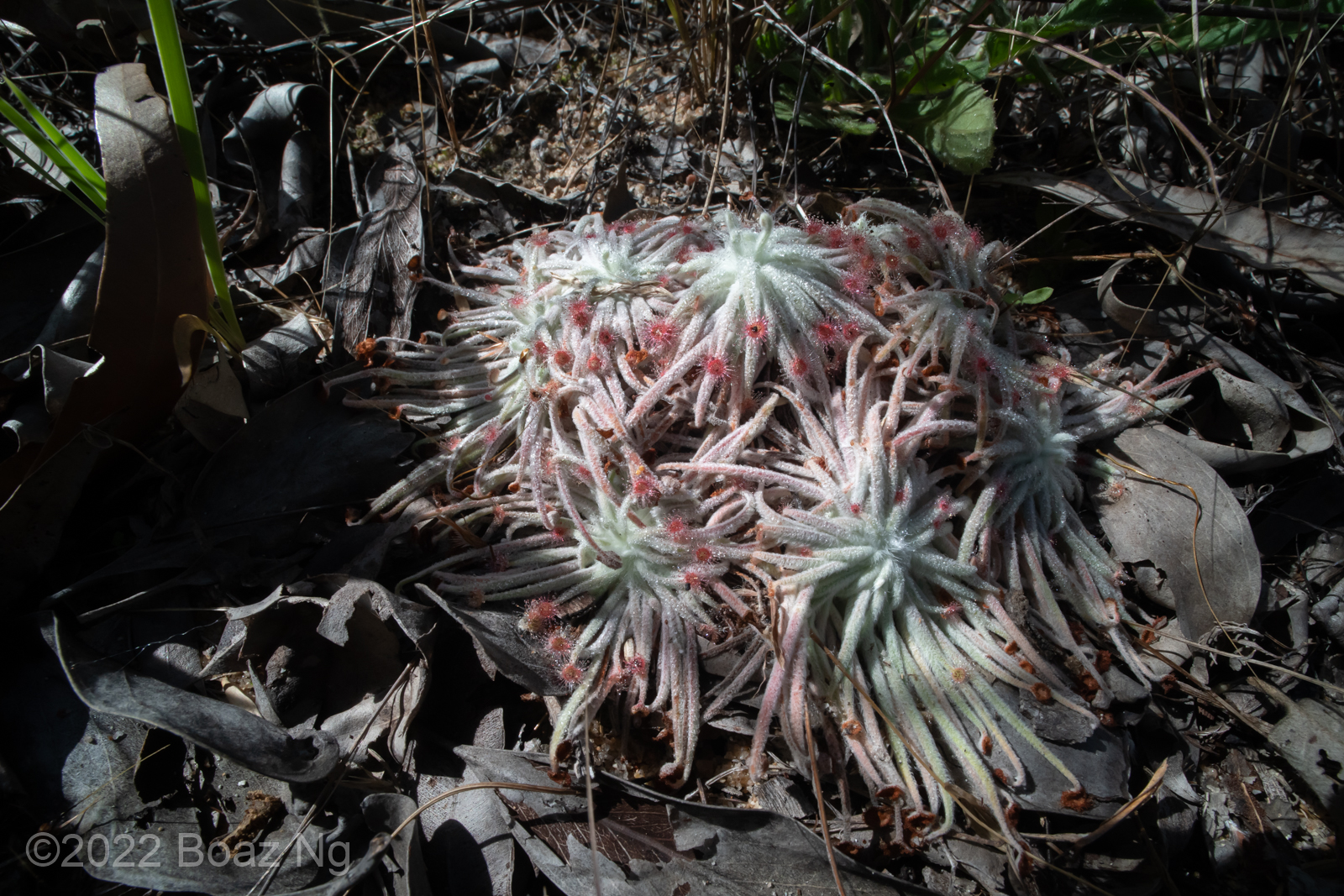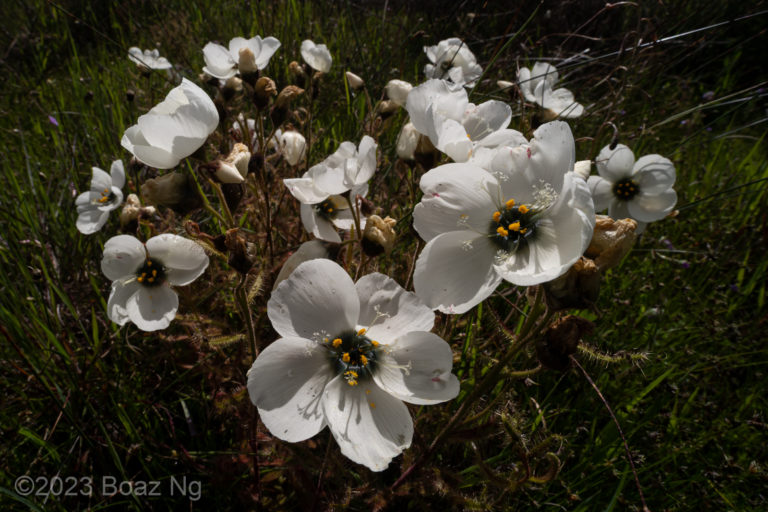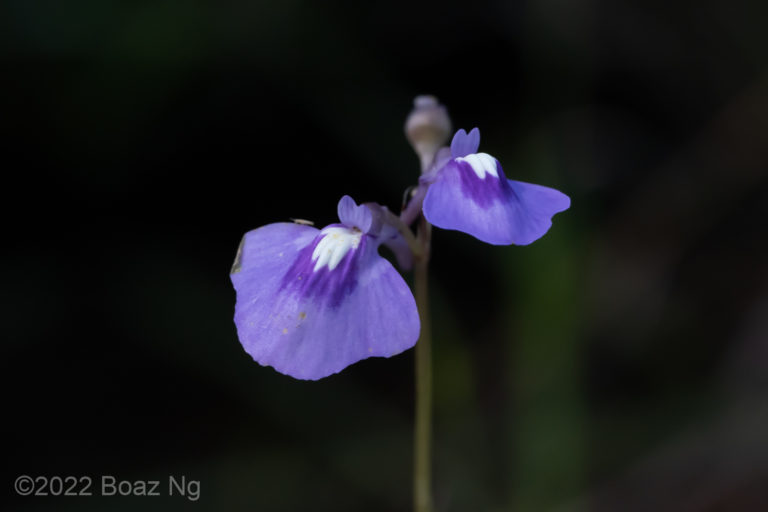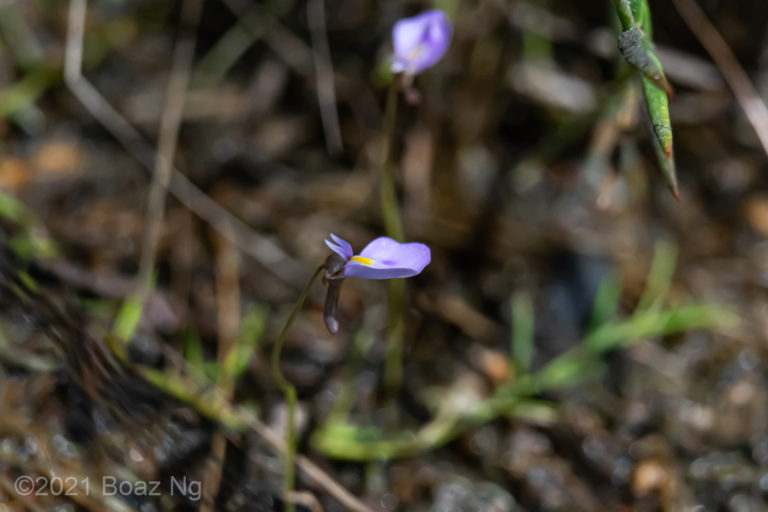Drosera lanata is a sundew in the section Lasiocephala endemic to Far North Queensland, NE Australia. The species is named after its thick covering of hairs that resemble a sheep’s wool (lanatus = woolly).
D. lanata is a medium-sized sundew, with semi-raised or flat rosettes around 6 cm in diameter. During the wet season, the leaves are fleshy and appear rounded towards the edges. The petioles are completely covered in a very dense layer of white dendritic hairs during active growth. These hairs and underlying pigmentation give the plant a cool-toned sage green colouration. The laminae are orange to red, small and orbicular. The pedicels hang downwards when in fruit. During the dry season, the rosette reduces greatly in size until it forms a dormant tuft of protective hairs. Plants can grow singly or as clonally divided clusters.
I have observed the species in the Atherton Tableland in Far North Queensland, although it also extends into Cape York. The species favours well-drained sand or clay substrates well above the seasonal inundation level. It is usually found in small clearings between shrubs. Active growth persists into the early dry season when the dense hairs efficiently capture the morning dew and insulate the growing point. The species is dormant at the height of the dry season as its environment dries out.
Similar, closely related taxa are found all the way to the tip of Cape York and although these would key out to D. lanata in the current taxonomy, they appear to be undescribed taxa. One such plant is similarly hairy but the petioles are elongated, thinner and flatter than D. lanata from the Atherton Tableland.
D. lanata is distinguished specifically from D. petiolaris by its very thick covering of woolly indumenta during its active growth phase (the indumenta of D. petiolaris is sparse-moderately dense in active growth).
